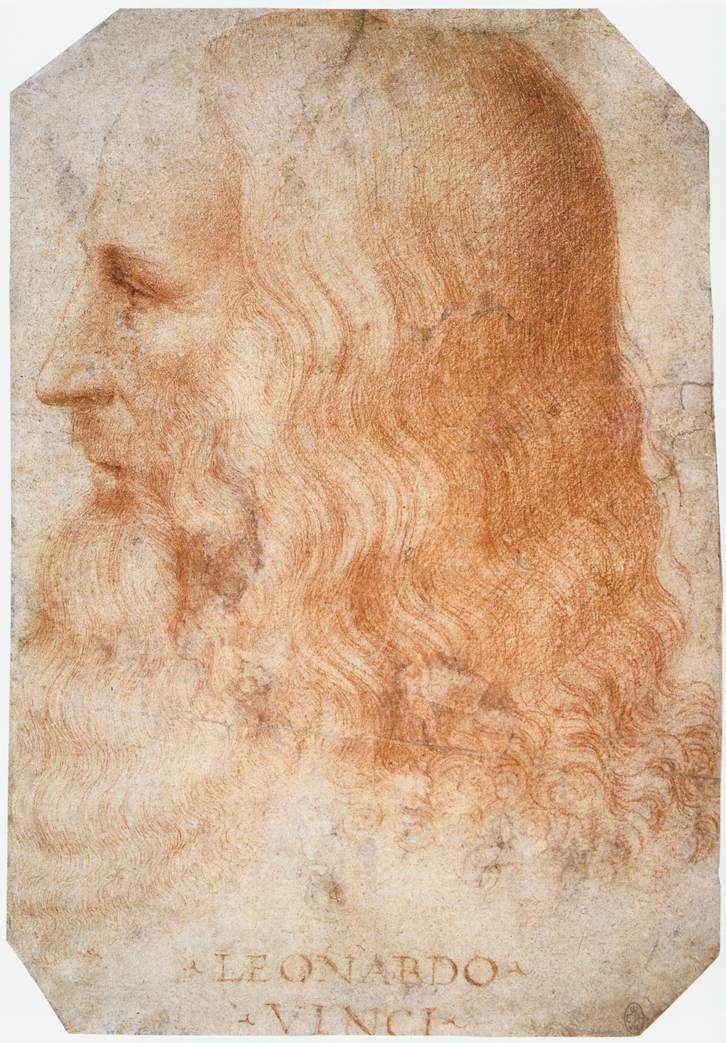An enormous block of marble nicknamed “The Giant” and “David” had sat unused for some thirty-five years. Agostino di Duccio had been given the block to sculpt into a massive portrayal of the biblical David in 1464, but the death of his master Donatello in 1466 had interrupted the project. Rossellino had been commissioned to continue, but his contract had been terminated. Until 1501, the block sat in the church workshop, cataloged as “a certain figure of marble called David, badly blocked out and supine.”
Leonardo da Vinci was consulted to work on the marble, but he initially declined. Times had been rough for the Renaissance man: he had fled French troops in Milan the year before and spent the interim in Venice working as a military architect before arriving in Florence. In the meantime, the invading French had used “Gran Cavallo,” his massive clay model of a horse (larger even than Donatello's), as a practice target. He was currently working on a cartoon of the Virgin while living at a monastery, and he doubted he could take on the extra work.
When Leonardo heard that the contract was going to go to the young upstart Michelangelo (who had recently completed the much applauded Pietà), he changed his mind. Michelangelo had insulted him years ago by implying that Leonardo was incapable of casting Gran Cavallo, which, worse, proved true as the bronze promised for the statue was taken to be used for cannon to defend Milan. Leonardo interrupted Michelangelo's contract, offering to do the work for little more than room and board. After a week and a half of the two artists bickering, Leonardo finally blurted, “He might give you a sculpture that can stand, but I'll give you one that can sing!”
Michelangelo scoffed, but the Operai, the commission for overseeing the works of the Duomo, were impressed. They had heard of Leonardo's many inventions and weapons, so they decided to give the man a chance. Leonardo had originally meant the singing to be figurative, but now he was stuck in a contract that would prove to revolutionize the Renaissance world.
Leonardo buried himself in a study of automatons. Stories of Greek, Egyptian, and Chinese machines that looked like men gave precedence but no real mechanical inspiration. The Arab Al-Jazari three hundred years before had built an emulation of a four-piece band that played on a boat as well as a robotic servant for washing guests' hands. Leonardo himself had sketched a series of gears to emulate sitting up and moving arms and legs just a few years before as part of his work with the Vitruvian Man. The impossible task gradually seemed doable.
His first task was to plan the singing David, making countless sketches in a variety of positions, finally planning the David to have his face toward Heaven while stroking a lyre. While assistants carved the marble, Leonardo studied music boxes and the human voice, creating a series of leather tubes powered by a hidden bellows and recorded positions of flaps on metal discs. Tiny levers and tubes would run through hollowed holes in the marble. The final statue (finished in 1507) was unable to produce recognizable words, but his humming was described as “angelic” by all who saw it. David's arm moved on a rotating gear, striking three notes on the carefully crafted enormous lyre that rested in his hands.
The robotic David astounded Florence, spreading Leonardo's fame throughout Europe. King Louis XII brought Leonardo to court, ordering as many moving statues as the artist could produce until his death in 1519. His workshop continued his work afterward, and multiple workshops sprang up emulating their techniques. A fury for automatons ran through Europe, leading to the Clockwork Revolution of the seventeenth century when labor-saving devices were routinely created by out-of-work artists and architects. Self-rising buckets from wells, continually pounding hammers powered by hot air in blacksmiths' forges, and the sewing machine changed life as the Enlightenment blossomed. With the adoption of steam power in the early 1700s, factories began to usher in the Industrial Revolution.
Michelangelo, meanwhile, returned to Rome after creating a bust of Mona, wife of the wealthy Florentine silk merchant Francesco del Giocondo, noted for its cryptic frown, almost as if frozen in a sigh. In Rome, he worked mainly on tombstones for the wealthy and powerful while his rival Raphael painted the well received, but not revolutionary, ceiling of the Sistine Chapel.
–
In reality, the twenty-six-year-old Michelangelo did complete the contract for David, one of the masterpieces of the Renaissance. It, as well as his Pietà and portrayals in the Sistine Chapel, helped Michelangelo become one of the most influential artists in Western history. Leonardo da Vinci's cartoon of “The Virgin and Child with St Anne and St John the Baptist” would be well received, but few of his works became more than the job at hand. He finished many smaller projects, such as the Mona Lisa and, under the patronage of King Francis I, a mechanical lion that could walk and open a compartment in its chest containing flowers.

No comments:
Post a Comment